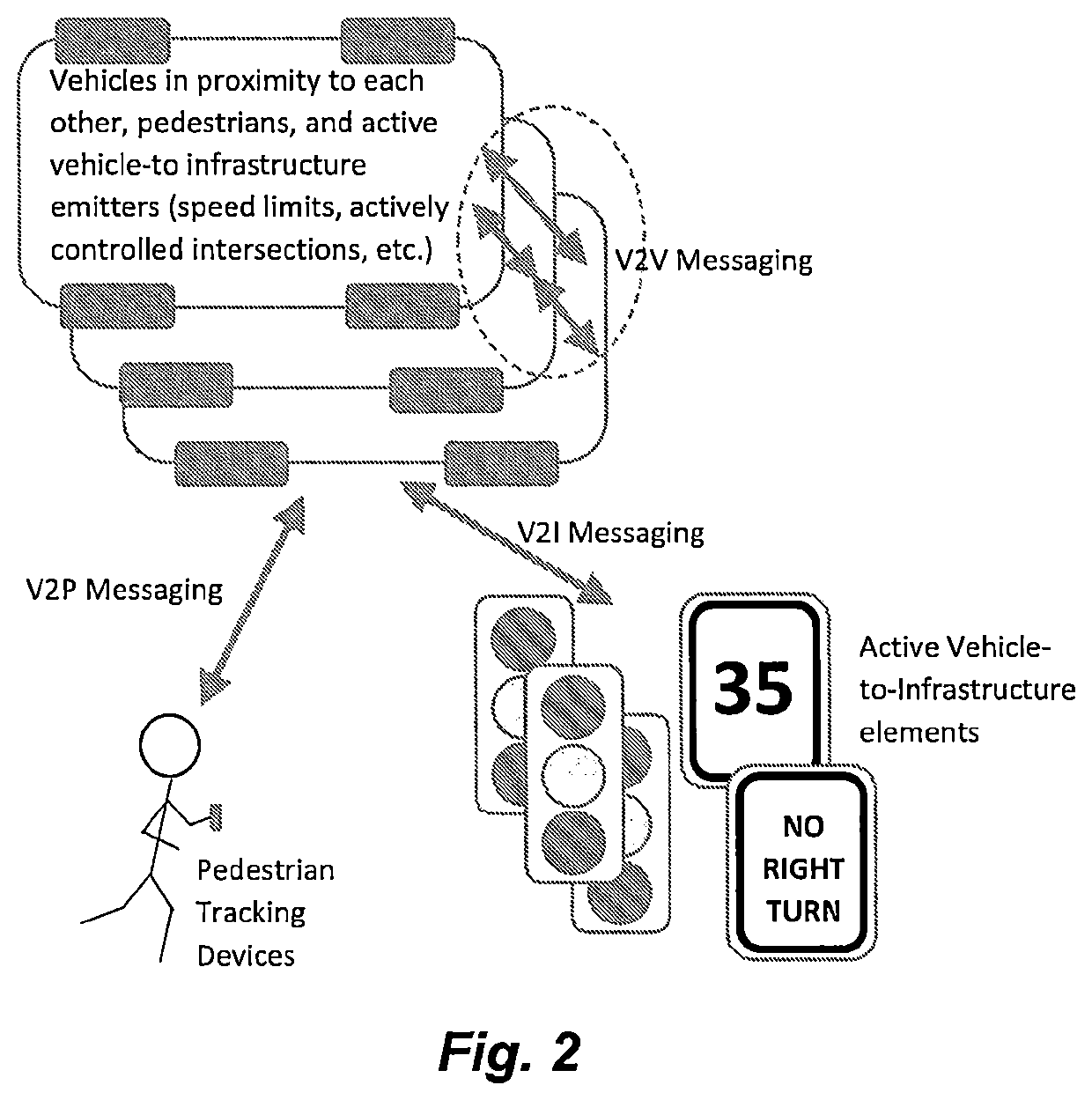Autonomous transportation system and methods
a technology of autonomous driving and transportation system, applied in the field of autonomous vehicles, can solve the problem that autonomous driving is not that new, and achieve the effect of reducing accidents and other problems, and improving traffic flow
- Summary
- Abstract
- Description
- Claims
- Application Information
AI Technical Summary
Benefits of technology
Problems solved by technology
Method used
Image
Examples
Embodiment Construction
[0074]In parallel with the development of technology enabling AVs is the idea of incorporating Vehicle-to-Vehicle (V2V), Vehicle-to-Infrastructure (V2I) and Vehicle-to-Pedestrian (V2P) transceivers. As envisioned by the United States Department of Transportation (DOT) Intelligent Transportation Systems Joint Program Office, short-range communications supporting high speed data exchange between vehicles can be the basis of vehicle safety applications, including alerts to vehicles of imminent hazards and information such as:[0075]veering close to the edge of the road[0076]vehicles suddenly stopped ahead[0077]collision paths during merging[0078]the presence of nearby communications devices and vehicles[0079]sharp curves or slippery patches of roadway ahead.1
Further identified applications include:[0080]Blind spot warnings[0081]Forward collision warnings[0082]Sudden braking ahead warnings[0083]Do not pass warnings[0084]Intersection collision avoidance and movement assistance[0085]Appro...
PUM
 Login to View More
Login to View More Abstract
Description
Claims
Application Information
 Login to View More
Login to View More - R&D
- Intellectual Property
- Life Sciences
- Materials
- Tech Scout
- Unparalleled Data Quality
- Higher Quality Content
- 60% Fewer Hallucinations
Browse by: Latest US Patents, China's latest patents, Technical Efficacy Thesaurus, Application Domain, Technology Topic, Popular Technical Reports.
© 2025 PatSnap. All rights reserved.Legal|Privacy policy|Modern Slavery Act Transparency Statement|Sitemap|About US| Contact US: help@patsnap.com



